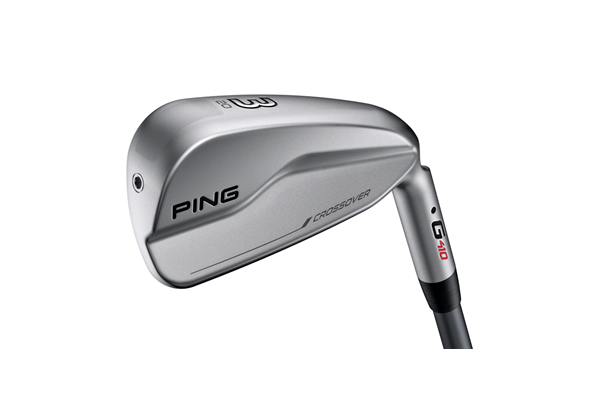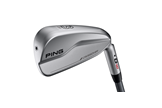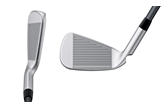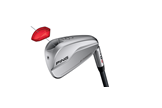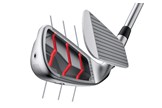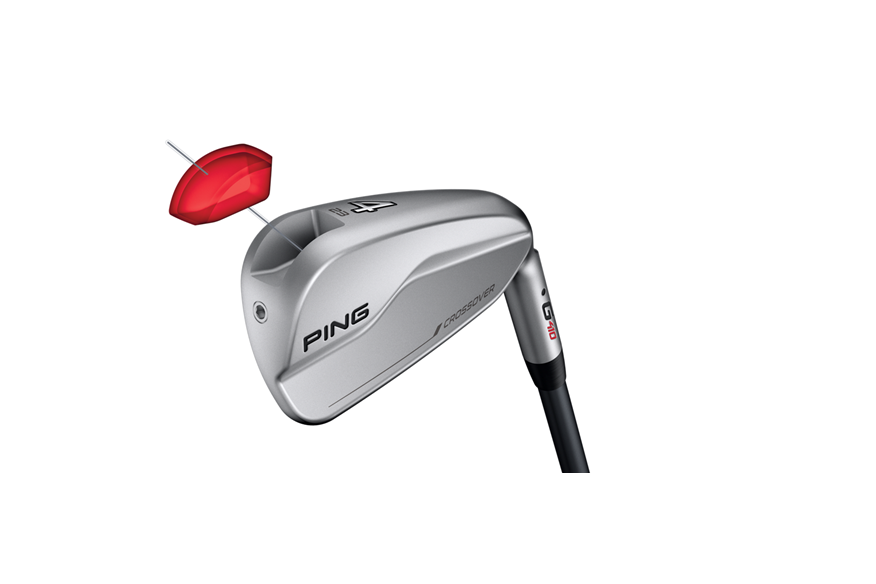Ping G410 Crossover Review
Last updated:
-
At a glance
- TG Rating
- Owner Rating
What we say...
The Ping G410 crossover is more like a forgiving long iron for players who really want to hit irons, instead of hybrids or fairway woods
Thanks to a thin, maraging steel face for faster ball speeds and a 30-gram dual-density tungsten toe weight, Ping’s latest crossover aims to look more like an iron but provide forgiveness normally associated with a hybrid.
Related: Reviewed – Ping G425 crossover
Ping have changed the design of the crossover considerably from the G400 in their 2019 offering, which is significantly shorter heel to toe and roughly 20% narrower in the sole.
They say purpose was to improve the delivery of the clubhead by improving turf interaction and creating more of a driving iron profile at address, while still providing a trajectory that is higher launching and with moderate spin – making it more of a long iron replacement.
What that means is Ping reckon a player could use the crossover in the lowest lofted version to make it appear like a driving iron, and yet still get the forgiveness of being able to hit it high, hit it low, as well as just have the iron shot shaping that you would typically start to have as a challenge with when you get to your long irons.
Available in 2, 3 and 4, the stainless steel head sets up square and offers a clean, premium look with the gearing properties of an iron to allow precision shot making. To ensure a solid feel and sound, the internal ribs are engineered to help stiffen the clubhead body.
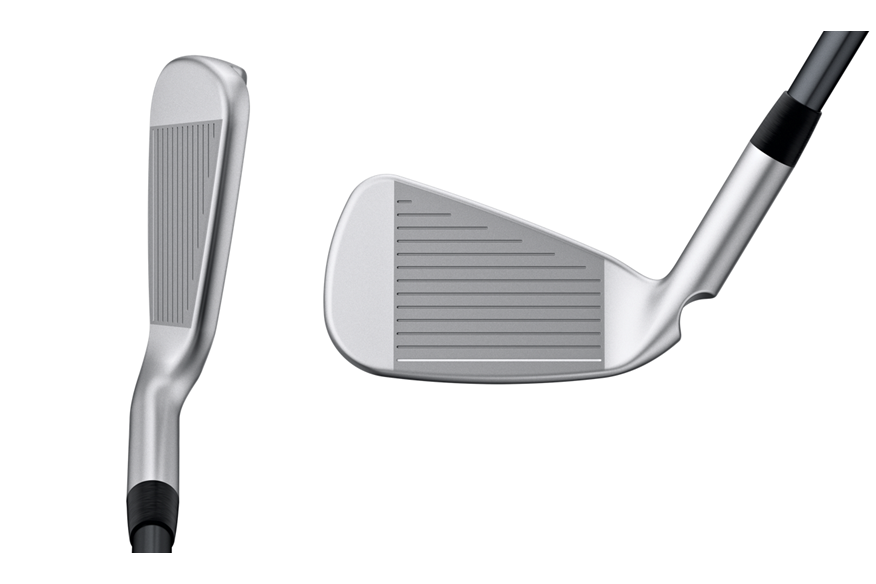
The biggest thing to note about the crossover is that compared to a long iron it is higher launching and higher spinning, particularly when compared to the G410 irons, i500 and G700. The G410 is really focused on delivering higher launch, moderately higher spin so that it has higher trajectory and better stopping power and really lends itself to being the long iron replacement.
Another big design change is the increased amount of tungsten. Ping have gone from from 20g to 30g of tungsten out on the low toe so that while it’s a smaller crossover it still delivers that stability and forgiveness within the design and to balances out iron performance.
Ping G410 Crossover Review: TG Verdict
Crossovers have changed beyond all recognition from the original. There’s 50% more tungsten weighting, a 20% narrower sole and a reduced blade length, which makes them visually a whole lot more pleasing. For us Crossovers shouldn’t be confused with driving irons – we see them much more as forgiving long irons for players who really want to hit irons, instead of hybrids or fairway woods. Powerful from the middle, but bigger drop-offs than traditional hybrids on mishits.
What are the big differences between the G400 and G410?
Ping say that the G400 and G410 are maxed out from a ball speed potential and are right up to the COR limit so Ping wanted to focus on unlocking distance gains through the trajectory in the G410 crossover.
A big part of that was turf interaction consistency, where every strike delivers peak ball speed potential but also the trajectory. To achieve this Ping have actually added a degree of loft to the three and the four crossover to delivering higher launch, a greater max height and ultimately further distance with more stopping power.
Why we use a Foresight GC Quad launch monitor

Product Information
Multi-material construction: 17-4 stainless steel head, C300 maraging-steel face, tungsten toe weight
Lofts: 2 (17⁰), 3 (20⁰), 4 (23⁰)
Available in all 10 color codes (lie angles): Maroon, Silver, White, Green, Blue, Black, Red, Orange, Brown, Gold
Std. lengths: 2 (40 3/8"), 3 (39 3/4"), 4 (39 1/8")
Std. grip: Golf Pride Tour Velvet in six sizes (Blue -1/16", Red -1/32", Aqua -1/64", White Std., Gold +1/32", Orange +1/16")
Stock shaft option: PING Alta CB Red (counter-balanced) 70 (SR, R, S, X)
No-upcharge shaft options: PING Tour 85 (R, S, X); Project X EvenFlow Black 85 (5.5, 6.0, 6.5); Mitsubishi Tensei Pro Blue 70 (R); Mitsubishi Tensei Pro Blue 80 (S, TX)
